Why Are More People Using This Buyer’s Guide?

Posted on Jun 03, 2024 in Palletizing
10 min read time
In the aftermath of the pandemic, the business environment has pushed manufacturers to evaluate (or reevaluate) automation. Manual, repetitive tasks - such as pallet stacking - are considered a logical initial focus.
However, feedback from individuals attempting to find solutions remains consistent: the fragmented palletizing automation market makes navigating information challenging and time-consuming. This is why more businesses are using the Automated Palletizing Buyer’s Guide.
Here is what we know:
- Time is finite - Technical specialists have limited bandwidth for exploring improvement options, while top executives cannot afford extended or repetitive proposals.
- Uptime is critical - While production uptime has always been paramount, today’s pressure is especially acute. Preventing downtime is a priority.
- Managing margins is challenging - Between part, labor, and transportation costs, the battle to maintain the bottom line is getting more difficult. As a result, production must increase their daily, weekly, and monthly shipments.
- Customer trends change quickly - Businesses must adapt to evolving consumer preferences and trends at a moment's notice.
Robotiq saw a problem that needed a solution. This is why we created the Automated Palletizing Buyers Guide. This compiles our industry expertise into a practical guide that assists users in researching, selecting, and presenting an automated palletizer solution. This blog article focuses on the first step of the process: the Strategic Imperative Framework.
Introducing the Strategic Imperative Framework
This Buyers Guide is a top-down approach to selecting the right palletizing solution for any business. The first step is the Strategic Imperative Framework, a high-level outline of the business challenges and opportunities.
The Strategic Imperative Framework stems from the Lean Robotics methodology, whose purpose is to: Empower People, boost Productivity, and foster Adaptability on the factory floor and maximize automation impact through efficient deployment phased in Design, Integrate, and Operate.
Impact Category: The What
The Strategic Imperative Framework begins with the impact categories of People, Productivity, and Adaptability. Each of these lines is ranked according to its level of importance. The table below summarizes each impact category located on the left side of the downloadable Strategic Imperative Framework.
|
Category |
Specific Element |
Element Details |
|
People |
Health & Safety |
Increase palletizing safety and reduce health risks. |
|
Labor Availability |
Reduce dependency on manual labor for hard-to-fill roles. |
|
|
Employee Engagement |
Increase employee growth and retention. |
|
|
Productivity |
Efficiency & Throughput |
Increase throughput and prevent bottlenecks. |
|
Consistency |
Increase pallet integrity and consistency. |
|
|
Adaptability |
Continuity |
Reduce downtime and reduce dependency on a few operators. |
|
Flexibility |
Meet cycle-time needs of the value stream in real time; reduce changeover time and complexity. |
|
|
Scalability |
Manage fluctuating demands, react to growth, and meet ROI. |
Solution Category: The How
The rating of solution mechanics is on the right side of the Strategic Imperative Framework. This will challenge the team to force-rank the most important categories. This will provide focus for the team when it transitions into researching the palletizing solution categories.
|
Category |
Specific Element |
Element Details |
|
Design |
Pre-Engineered Precision |
Reduce design costs, prevent scope creep, and reduce risks associated with custom-engineered designs. |
|
Maximized Performance |
Maximize payload and pick rate. Decrease footprint. |
|
|
Turnkey Solution |
Reduce selection and installation complexity. |
|
|
Integrate |
Fast Installation |
Reduce system install and training time. |
|
Factory Fit |
Minimize impact to factory layout; minimize rearranging upstream and downstream operations. |
|
|
Operate |
Reliability |
Increase production uptime and reduce unplanned downtime. |
|
Control |
Maintain control of product handling, increase software usability, and modify programs autonomously. |
The Strategic Imperative Framework
The Strategic Imperative Framework is a downloadable tool that is designed to be used and saved by the research team. While not intended presentation material, this framework is an important baseline for the rest of the process.
Next Steps
Once completed and memorized, the Strategic Imperative Framework will be put aside (temporarily). The next step in the process is to understand the different solution categories available on the market. The business priority and solution landscape will then come together in later chapters.
The Automated Buyer’s Guide walks teams through the following steps:
1. Strategic imperatives:
Start by revisiting the Strategic Imperatives Framework from the beginning of the process. These are the guiding principles for your decision-making process. Following this, the Business Alignment Matrix should help align those business principles to the different palletizing solution categories.
2. Detail specifications:
Summarize the technical specifications and highlight specific features (and functions) that are essential with the Palletizing Process Detailed Specifications table.
3. Solution ratings:
Review the previous tools to analyze the palletizing options. Categorize each based on how well they align with the strategic imperatives and specifications.
4. Cost analysis:
Provide an overview of the cost analysis, detailing the initial investments, operating costs, and scalability implications for each solution.
5. Decision-making framework:
Transfer required information to your business’s decision-making framework.
6. Conclusion and recommendation:
Based on the alignment with your strategic imperatives, specifications, and cost analysis, present the solution that emerged as the most suitable.
7. Pitch and justification:
Using the information documented in the Automated Palletizing Buyer's Guide, develop a persuasive argument for your chosen solution. Highlight its benefits, unique value proposition, and how it aligns with your company's long-term goals.
8. Internal communication:
Prepare a clear and concise presentation (or document) to share with relevant stakeholders in your organization. Ensure that your justification is well-structured and data-driven.
The Automated Palletizing Buyer’s Guide is available, along with all the tools, from Robotiq.
Moving to Action
The post-pandemic business landscape has prompted manufacturers to reassess the role of automation, particularly in addressing manual, repetitive tasks like palletizing. However, feedback indicates that navigating the fragmented palletizing automation market remains a significant challenge. This is why we created the Automated Palletizing Buyer’s Guide.
The Automated Palletizing Buyer’s Guide compiles industry expertise into a practical resource for researching, selecting, and presenting automated palletizer solutions. This guide introduces the Strategic Imperative Framework, a high-level approach to aligning business challenges and opportunities with automation solutions. By leveraging this framework, businesses can make informed decisions that drive productivity, empower employees, and enhance adaptability on the factory floor. Through efficient deployment and phased integration, businesses can maximize the impact of automation and address their unique operational needs.
Additional Resources
Are you familiar with the concept of LEAN ROBOTICS? With their extensive experience aiding tens of thousands of manufacturers on their automation journey, the Robotiq team provides insight on how to stay focused during the process. Our LEAN ROBOTICS book is available in text or as an audiobook. Click here for more information.
Ready to start? Talk with one of our palletizing experts.

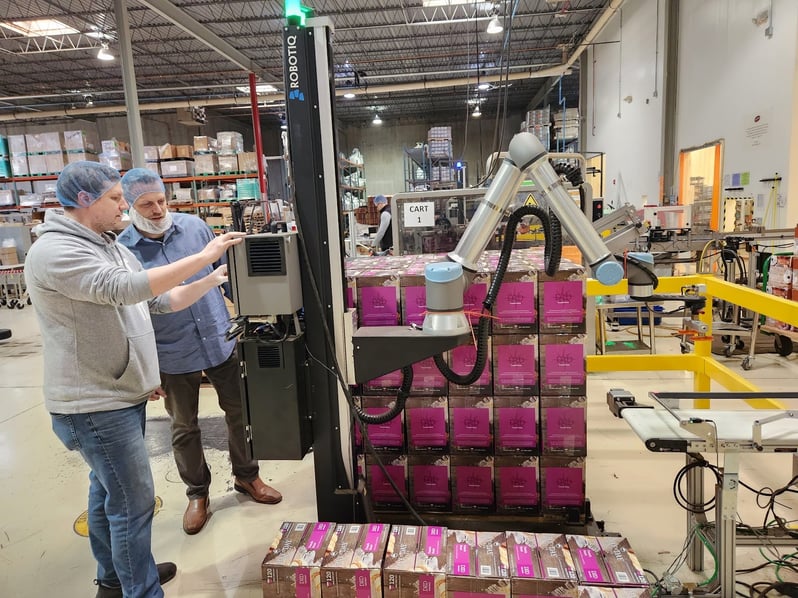

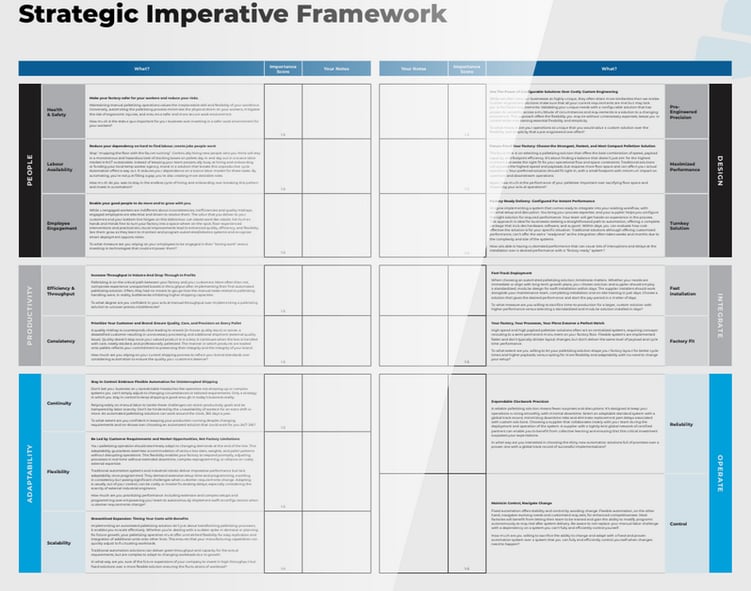

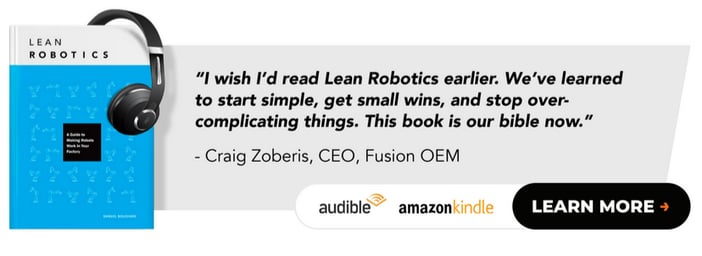
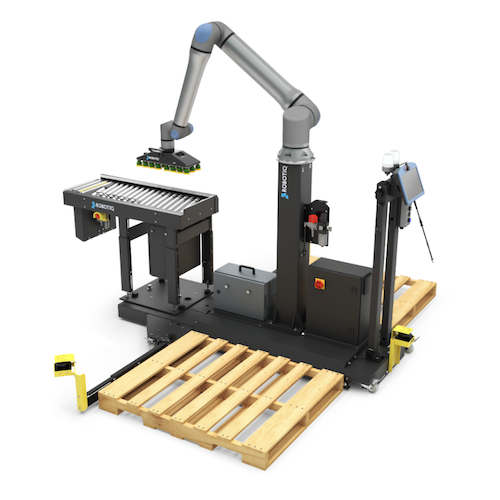
-modified.png)
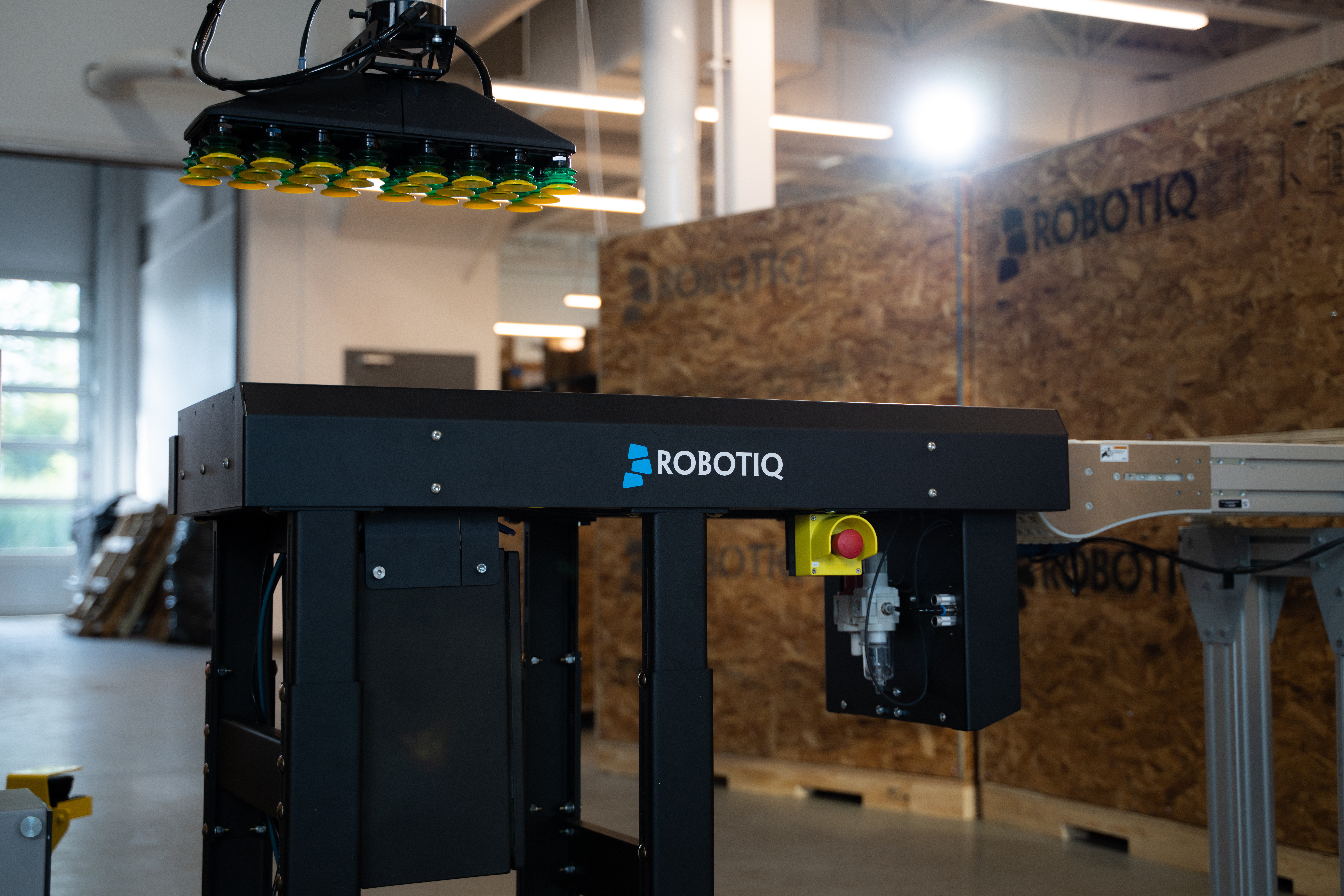

-2.jpg)

Leave a comment